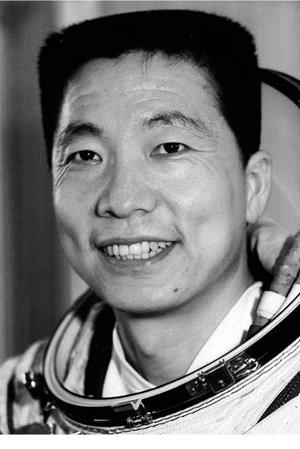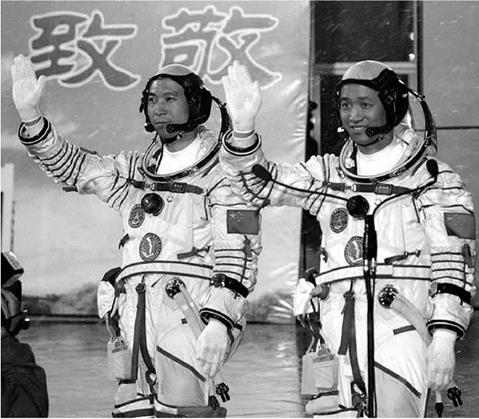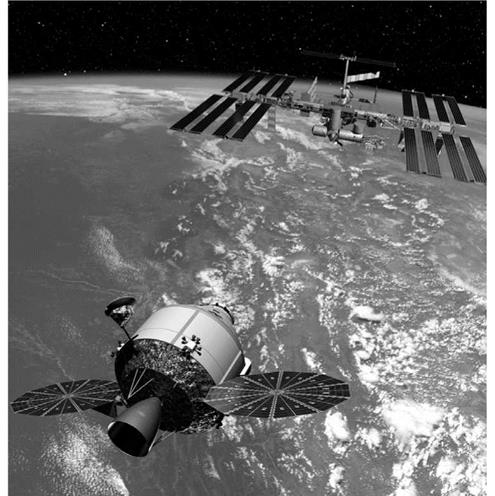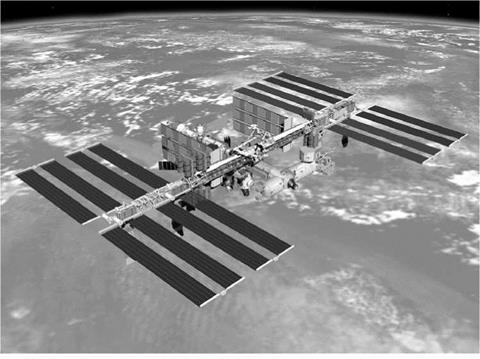The Space Shuttle and International Space Station
• Complete assembly of the International Space Station, including the U. S. components that support U. S. space exploration goals and those provided by foreign partners by 2010.
• Return the space shuttle to flight as soon as practical, based on the recommendations of the Columbia Accident Investigation Board.
• Retirement of the space shuttle by the end of 2010
The Moon
• Undertake lunar exploration activities to enable sustained human and robotic exploration of Mars and more distant destinations in the Solar System.
• Starting no later than 2008, initiate a series of robotic missions to the Moon to prepare for and support future human exploration activities.
• Conduct the first extended human expedition to the lunar surface as early as 2015, but no later than the year 2020.
Mars
• Conduct robotic exploration of Mars to search for evidence of life, to understand the history of the Solar System, and to prepare for future human exploration.
• Conduct robotic exploration across the Solar System for scientific purposes and to support human exploration. In particular, explore Jupiter’s moons, asteroids, and other bodies to search for evidence of life, to understand the history of the Solar System, and to search for resources.
• Conduct advanced telescope searches for Earth-like planets and habitable environments around other stars.
• Develop and demonstrate power generation, propulsion, life support, and other key capabilities required to support more distant, more capable, and/or longer duration human and robotic exploration of Mars and other destinations.
• Conduct human expeditions to Mars after acquiring adequate knowledge about the planet using robotic missions and after successfully demonstrating sustained human exploration missions to the Moon.
New spacecraft
• Develop a new crew exploration vehicle to provide crew transportation for missions beyond low Earth orbit.
– Conduct the initial test flight before the end of this decade in order to provide an operational capability to support human exploration missions no later than 2014.
• Separate to the maximum practical extent crew from cargo transportation to the International Space Station and for launching exploration missions beyond low Earth orbit
– Acquire cargo transportation as soon as practical and affordable to support missions to and from the International Space Station.
– Acquire crew transportation to and from the International Space Station, as required, after the space shuttle is retired from service.
The second step came two weeks later when an Executive Order formed a commission comprising several industry leaders. It would be their job to outline the best way for NASA to achieve the goals that President Bush had set in his speech; this commission had only four months to report its findings back to the White House.
At last it seemed that NASA would have a clear path forward that it had been craving since Apollo 17 left the surface of the moon so many years ago. It was clearly understood what was required of the space agency, for the first time in many years they would be striving for achievable goals, rather than pushing frontiers that it couldn’t hope to reach. Most importantly, the funding for these goals had been committed, and as long as NASA made good progress, the money would continue to flow. It remains to be seen how this policy will be carried over from one President to the next, but for now NASA has a clear goal to work towards.
Perhaps the largest single task ahead of NASA is the development of a replacement spacecraft for the space shuttle, the Crew Exploration Vehicle (CEV), or Orion as it would later become officially known. What would such a vehicle look like? Would it be wings and wheels again, like the space shuttle, or would a simpler design be a surer bet for success? A significant complicating factor was the need for such a spacecraft to not only fly to Earth orbit and the ISS, but also be adaptable enough to form the basis of a Moon and Mars orbiter. In September 2004 NASA issued contracts to eight aerospace contractors to begin studies into the kind of designs which would fullfil the following requirements:
• Support a minimum crew of four (NASA preferred six) from the Earth’s surface through mission completion on the Earth’s surface.
• Have a mass less than 15-18 tonnes (the precise value to be determined in preliminary contract studies).
• Have an abort capability during all phases of flight. Preferably such abort capability would be available continuously and independent of Launch Vehicle (LV) or Earth Departure Stage (EDS) flight control.
• Integrate with the Constellation Launch Vehicle (LV) to achieve low Earth orbit.
• Integrate with the Earth Departure Stage (EDS) to achieve lunar orbit.
• Integrate with the Lunar Surface Access Module (LSAM) to achieve lunar surface mission objectives. Preferably the CEV would be capable of transferring consumables to and from the EDS and the LSAM.
Perhaps not surprisingly the selected companies came back with very different design solutions, they did, however, agree on some basic principles. Namely that it would be most cost effective to make use of either an existing launch vehicle, or one derived from existing technology. This launch vehicle would also make use of extra stages or strap-on boosters to make launches to the Moon or Mars possible from the same core rocket. They also agreed that a four-man craft, at least for Earth orbit missions, would be ideal, and should weigh less than nine tonnes. By June 2005, NASA had narrowed the contractor list down to two; Lockheed Martin, and a joint team of Northrop-Grumman and Boeing, these two “finalists” would build a CEV of NASA’s design, and the decision between the two would be made without either party having to build a prototype. NASA’s own design had changed somewhat from the original requirements, the crew had grown from four to six, and the launch weight had grown with it, to 30 tonnes. The increased weight also rather narrowed down the list of launch vehicles available, in fact no existing rocket was considered suitable to launch the CEV in its new form. A new launcher, derived from existing shuttle technology would have to be created. In fact NASA seemed intent on pushing its own design for both the CEV and launch vehicle rather than embracing the designs submitted by experienced aerospace contractors after months of detailed technical and practical study. It seemed clear that NASA had never intended to make use of the innovative designs that many of the contractors had come up, and had always planned to make use of its design. Many industry experts felt that NASA’s basic design assumptions were flawed, and likened the situation to the initial designs of the Apollo spacecraft that took Americans to the moon nearly forty years earlier.
Whatever NASA’s intentions the winning contractor was announced on the 31 August 2006, it would be Lockheed Martin that would build the new spacecraft named Orion. The spacecraft’s new name had been officially announced the previous day, but unfortunately some of that fire had been stolen when astronaut Jeff Williams, speaking during a press conference on board the ISS, had let the name slip eight days earlier.
With that announcement made, NASA’s attention turned to the launch vehicles that would be used for Orion. The first, most basic, is called Ares 1, it is otherwise known as “the stick’’. This is the launch vehicle that will be used for all of Orion’s Earth orbit missions, including those that rendezvous with the ISS. Initially it appeared as if Orion’s great weight would be far too much for the shuttle solid rocket motor derived Ares 1, many within the industry feel that NASA has more problems with its design than it is letting on, but during recent press conferences NASA has assured everyone that Ares 1 will be ready on time for Orion’s first flight, not thought to take place sometime in 2012.
On 13 December 2004 Sean O’Keefe resigned as Administrator of NASA. He had maintained this position for three years, through the Columbia disaster and the troubled planning for the shuttle’s return to flight.
The space shuttle returned to flight with Discovery flying STS-114 in July 2005. This flight was not without its problems, but NASA is now back in the business of flying space shuttles and completing the construction of the International Space Station (ISS).
The new NASA Administrator, Mike Griffin, has vowed to reverse the fortunes of a beleaguered agency, and focus on Project Constellation. On 28 September 2005 Griffin said that the shuttle and ISS, indeed the whole of the U. S. manned space program for the past three decades, had been mistakes! He said NASA lost its way in the 1970s, when the agency ended the Apollo program of moon visits in favor of developing the shuttle and space station, which can only orbit Earth. These decisions can be directly connected to the Apollo mode decision made during the 1960s.
“It is now commonly accepted that was not the right path,’’ Griffin said. “We are now trying to change the path while doing as little damage as we can. It cannot be done instantaneously.’’
Only now is the nation’s space program getting back on track, Griffin said a week after the announcement that NASA aims to send astronauts back to the moon in 2018 in a spacecraft that would look like the Apollo capsule and would be carried into space by a rocket built from shuttle components.
When asked whether the shuttle had been a mistake, Griffin said, “My opinion is that it was. It was a design which was extremely aggressive and just barely possible, especially with the amount of funding allocated to the problem.’’ He added on the subject of the ISS which was started in 1999, “Had the decision been mine, we would not have built the space station we’re building in the orbit we’re building it in.’’
Griffin’s statements have sparked a great deal of analysis of the space shuttle and ISS programs. Hindsight of course is a wonderful thing, but at the time, at the end of Apollo and Skylab, NASA had very little choice about its next manned spaceflight program. Had money been no object, then clearly things would have been different, but Congress and President Nixon would only allow a certain amount to be spent; there were, as always, other priorities. Had NASA pushed for more moon flights, or missions to Mars they would simply have been turned down, and possibly left with no manned program of any kind. NASA hoped that by going ahead with the shuttle, compromised design though it was, they would eventually be able to add the other components, such as the space station, at later dates. To a certain extent this turned out to be the case, but it took far longer than NASA had envisaged, and it had already cost the lives of the seven Challenger shuttle astronauts before anything else was built or flown. The birth of the ISS has already been covered in earlier chapters,
|
Shenzhou 5 crew—Liwei Yang |
but one thing is worth considering. Griffin suggests at the end of his statement that he would not have built the station in its current orbit. He is presumably alluding to the fact that NASA agreed to change the inclination of the ISS orbit to 51 degrees in order to enable the Russians to launch payloads and crews from their launch site at Baikonur. The detrimental effect of this decision was that the shuttle effectively had its payload to ISS orbit capability cut by as much as 30%; or to put it another way, the change added a further 10-15 shuttle flights to the building schedule. Griffin apparently views this concession as a mistake, but imagine if the ISS had been placed in its original 28-degree orbit, out of the reach of the Russians, the station would have had to be abandoned after the Columbia accident in February 2003, as NASA would have had no other means to reach it.
The Chinese, on the other hand, have made their intentions quite clear. They now have two successful manned flights under their belts with the launches of Shenzhou 5 in October 2003, and the two-man launch of Shenzhou 6 in October 2005.
|
Shenzou 6 crew—Junlon Fei and Haisheng Nie |
The second of these flights is more significant because it lasted for just over five days, had a crew of two, and for the first time for the Chinese that crew carried out scientific experiments. To call the Shenzhou 6 spacecraft a “mini space station” would be taking things too far. After all, Shenzhou is an evolution of the Russian Soyuz spacecraft, although it is larger and has been changed a great deal from the original Soyuz design. However, the Chinese clearly have that kind of development in mind with this design. The orbital module is larger than Soyuz, and has its own propulsion and solar arrays that allow for autonomous flight. This means that the orbital module can be left flying, and carrying out automatic experiments after the crew has left the module and returned to Earth. Just such a mission profile was followed during the first manned flight of Shenzhou in 2003, the orbital module remained circling the Earth fulfilling a six month long military imaging mission. It also means that these modules could be launched to attach to an existing space station by themselves allowing the station to grow. It is thought that the orbital module comes in different sizes for different mission profiles.
They will have a manned station in orbit by 2015, and whilst nobody could say that this is an accelerated program, the station will be of their own design, and not borrowed Soviet/Russian technology. The Chinese are in space to stay, and seem keen not to repeat the unfocused programs of NASA and its partners, but to take one step at a time in a logical fashion. In more recent times (11 January 2007), the Chinese have angered the rest of the world with their testing of an ASAT (anti-satellite) resulting in the destruction of an obsolete weather satellite; such tests have not been carried out by either the U. S. Air Force or the Soviets for about twenty years. This further underlines the fact that the Chinese are following their own agenda both in space and on the ground, and have little regard for the opinions of the rest of the world.
The Russians too have plans for the future despite their more limited financial resources. A design intended to replace the venerable Soyuz and Progress spacecraft is on the drawing boards, and it is called Kliper. Design work on this new spacecraft began back in 2000, but its configuration has changed many times since to reflect both the needs of the Russian, and ISS space programs, and of course the budgets of the agencies involved. The specification is now set to carry six people to and from Earth orbit, plus carry 500 kg of cargo/supplies. The new spacecraft will have a service life of 10 years or 25 flights. The design was first revealed to the public in February 2004 at a press conference held by Yuri Koptev of RKK Energia; however, by April 2005 no funding from the Russian government had been forthcoming according to Valery Ryumin of RKK Energia. Good news for Kliper came in June 2005, when the European Space Agency (ESA) seemed to commit themselves to the development of the project. This would allow Kliper to be launched from the ESA Korou launch site as well as the existing Russian facilities. The support from ESA could mean that Kliper should launch sometime in 2011. Kliper will be launched by a Soyuz-3 booster, and in August 2005 a model of the Soyuz-3 booster with Kliper atop was shown at the Moscow Air and Space Show, MAKS-2005. Japan has also shown interest in the project as involvement would give them independent access to the ISS and its own Kibo Spacelab without requiring seats on the U. S. space shuttle. However, in the summer of 2006, ESA changed its plans, and forced RKK Energia to revisit the design of the Kliper spacecraft, it now seems unlikely that the Kliper will ever fly as Russia’s focus had returned to the Soyuz, and a possible upgrade of that spacecraft.
Space stations have literally come a long way since 1971 and the launch of Salyut 1. The Soviets/Russians have arguably made the greatest leaps, both in terms of hardware design and crew organization and motivation. NASA, however, has learned to apply its greater levels of technology relevantly and with great effect. It has, perhaps, taken them longer to embrace the finer points of crew interaction and scheduling, probably understandable all the time they were flying the space shuttle as well. Now NASA, with Orion, has the opportunity to make great strides beyond low-Earth orbit, to the moon and Mars, but what of the future of the ISS, this is much less clear. Orion will service the ISS once the shuttle completes construction of the station before the end of 2010, and Russia will continue to send Soyuz spacecraft and Progress cargo ships, the ESA will also send its ATV to the ISS for replenishment of consumables for the crew. Beyond that, Russia has plans to expand the station with
|
Orion approaches the ISS |
more modules, but that initiative is solely reliant on finding the money to finance it. The ESA and Japan will at long last have their labs to carry out research in, and that will probably keep both organizations busy for some time to come. Beyond all of these possibilities, the future of the ISS is unknown, in fact none of the participating nations are saying very much about the future; presumably they are all too tied up in getting construction completed.
The next space stations will probably not even be in Earth orbit, stations orbiting the moon and Mars seem more likely to be the next stage of development, and clearly this represents an even greater challenge, for both man and technology.
|
ISS completed |














